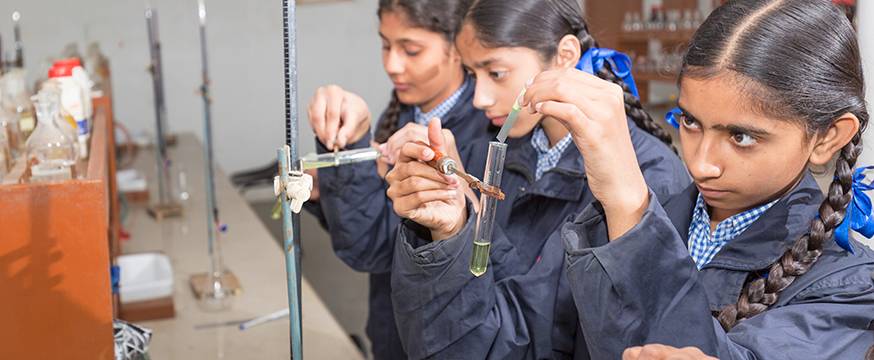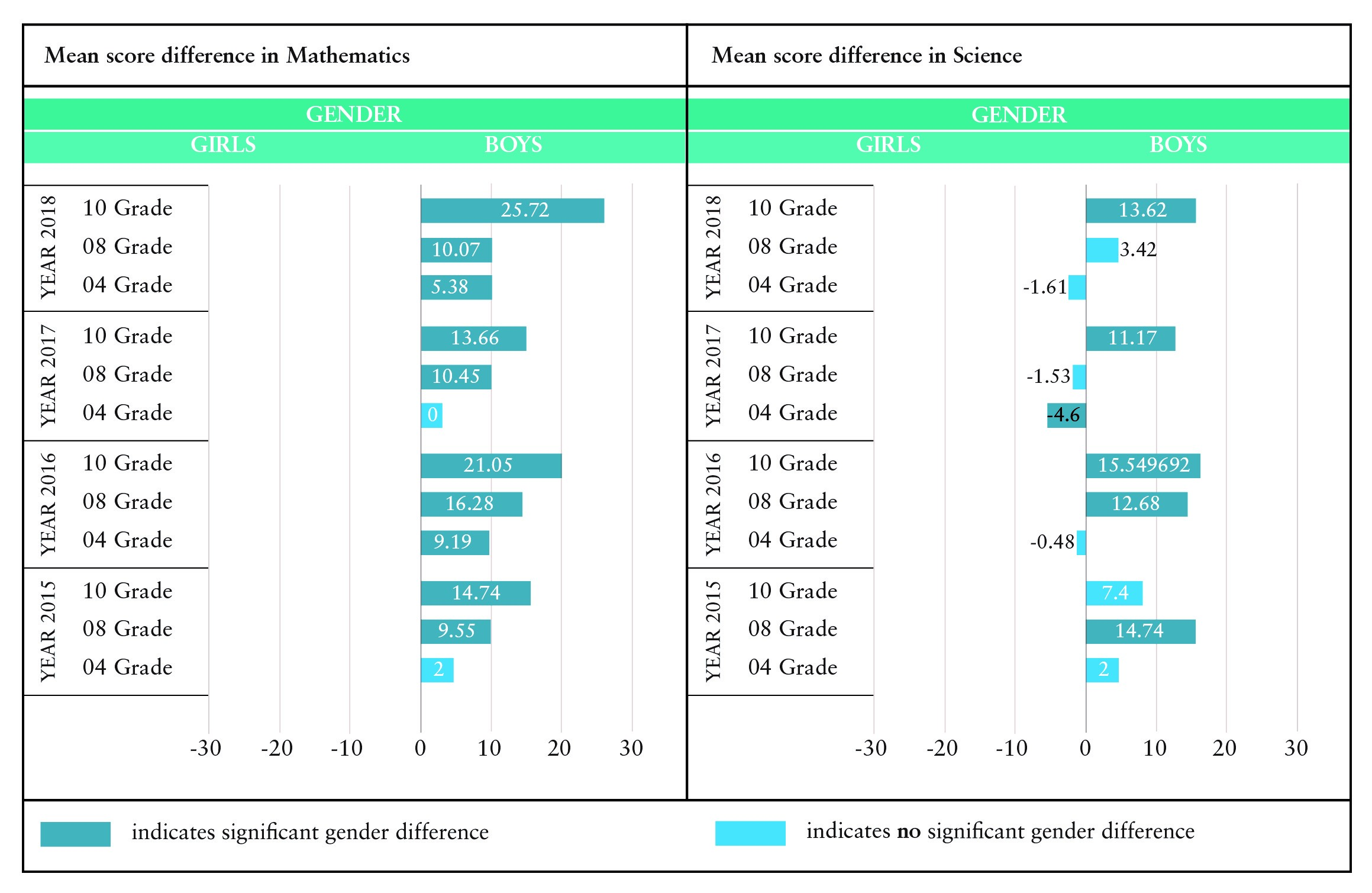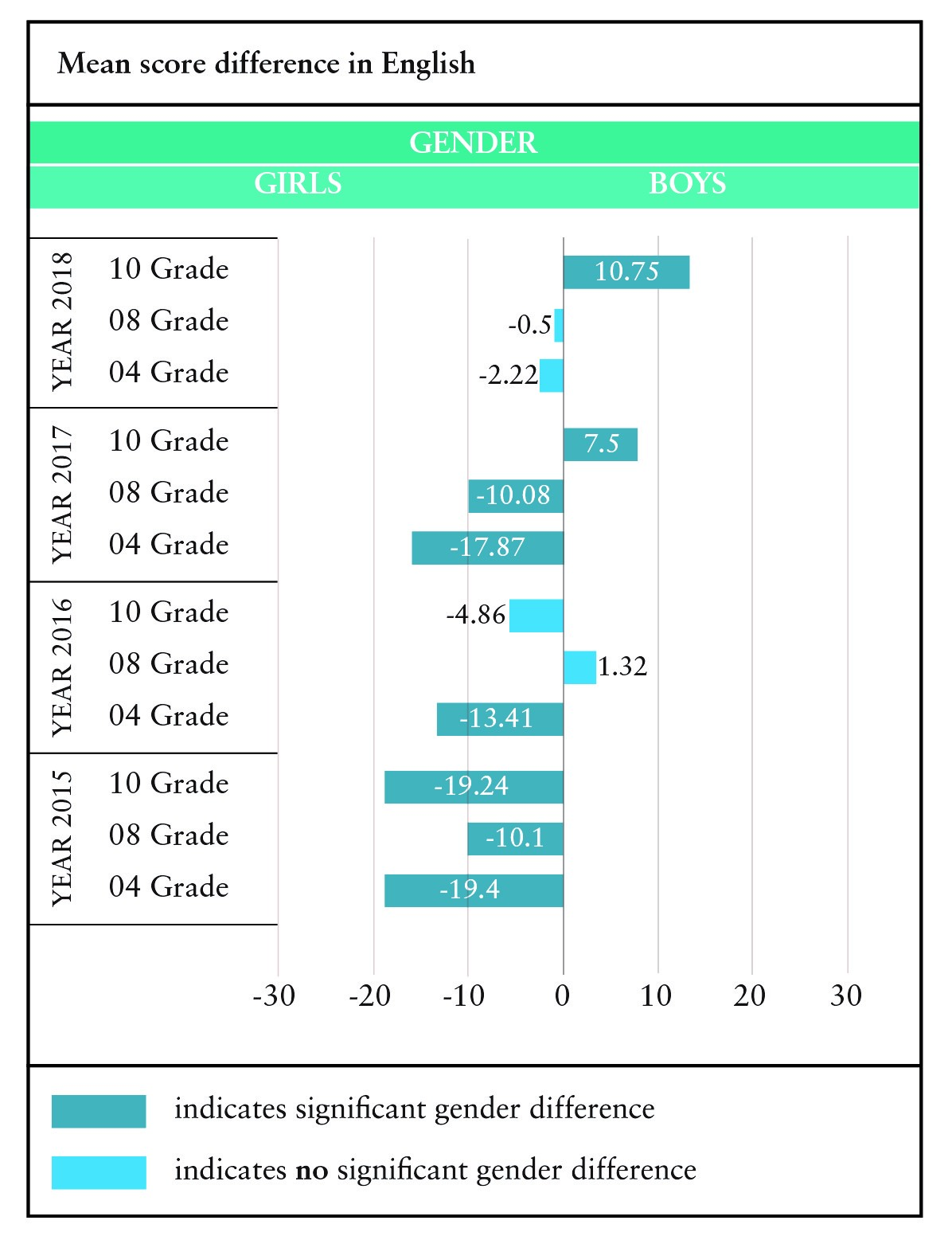
Gender disparity in STEM: Evidence from India
Research 29 Aug 2019 10 minute readPerformance gaps in mathematics and science between India’s girls and boys grow as students proceed from primary to secondary level, Abha Bhagat and R Vijayaraghavan report.
Gender disparity in STEM: Evidence from India
The 2030 Agenda for Sustainable Development Goals target quality education for all and gender equality as critical to building a prosperous and sustainable society. Equal opportunities in learning Science, Technology, Engineering, and Mathematics (STEM) are important for job opportunities and also for tackling growing economic, social, and environmental challenges. Although India has made strides in the education of girls, participation and performance of women in STEM are still a challenge.
The UNESCO report Cracking the Code: Girls and Women’s Education in STEM analysed student learning data from more than 120 countries that participate in large-scale international learning assessments. The report found that on average in middle to high-income countries, gender disparity in terms of science learning achievement reduces as students progress through school, while a significant difference continues to exist in mathematics. However, little is known about the performance of girls in STEM for countries or regions that do not regularly participate in international large-scale assessments.
In India, the National Achievement Survey (NAS) assesses the learning outcomes of students studying in government and private-aided schools, and also provides data on gender disparities in learning achievements at the national level. However, as stated in a recent British Council report, a significant population of students (16.71 per cent according to the Seventh All India School Educational Survey estimates) study in private unaided schools and there exists little large-scale learning data on their performance.
Gender disparity in STEM: Evidence from India
The 2030 Agenda for Sustainable Development Goals target quality education for all and gender equality as critical to building a prosperous and sustainable society. Equal opportunities in learning Science, Technology, Engineering, and Mathematics (STEM) are important for job opportunities and also for tackling growing economic, social, and environmental challenges. Although India has made strides in the education of girls, participation and performance of women in STEM are still a challenge.
The UNESCO report Cracking the Code: Girls and Women’s Education in STEM analysed student learning data from more than 120 countries that participate in large-scale international learning assessments. The report found that on average in middle to high-income countries, gender disparity in terms of science learning achievement reduces as students progress through school, while a significant difference continues to exist in mathematics. However, little is known about the performance of girls in STEM for countries or regions that do not regularly participate in international large-scale assessments.
In India, the National Achievement Survey (NAS) assesses the learning outcomes of students studying in government and private-aided schools, and also provides data on gender disparities in learning achievements at the national level. However, as stated in a recent British Council report, a significant population of students (16.71 per cent according to the Seventh All India School Educational Survey estimates) study in private unaided schools and there exists little large-scale learning data on their performance.
Study methodology
Data from the International Benchmark Test (IBT) offers a way to better understand the science and mathematics achievement of girls and boys in India’s private unaided schools. Developed by the Australian Council for Educational Research (ACER) IBT is an international learning assessment program used by schools in many countries including India to test students in grades 3 to 10 in English, mathematics, science and reasoning, and benchmark their performance nationally and internationally. The assessment is written and conducted in English.
An investigation of the mathematics, science and English performance of between 1000 to 2000 students in each of grades 4, 8 and 10 in 100 private unaided schools was conducted to find out how girls fare compared to their male peers. The grades were chosen to cover primary to lower-secondary levels in India participating in IBT from 2015 to 2018.
The schools participating in IBT are mostly renowned schools with English as the medium of instruction. Students hailing from such private unaided schools usually belong to families in middle to high socio-economic categories where disparities in boys’ and girls’ education in terms of opportunities and resources available are expected to be less prominent, if not totally negligible.
Study methodology
Data from the International Benchmark Test (IBT) offers a way to better understand the science and mathematics achievement of girls and boys in India’s private unaided schools. Developed by the Australian Council for Educational Research (ACER) IBT is an international learning assessment program used by schools in many countries including India to test students in grades 3 to 10 in English, mathematics, science and reasoning, and benchmark their performance nationally and internationally. The assessment is written and conducted in English.
An investigation of the mathematics, science and English performance of between 1000 to 2000 students in each of grades 4, 8 and 10 in 100 private unaided schools was conducted to find out how girls fare compared to their male peers. The grades were chosen to cover primary to lower-secondary levels in India participating in IBT from 2015 to 2018.
The schools participating in IBT are mostly renowned schools with English as the medium of instruction. Students hailing from such private unaided schools usually belong to families in middle to high socio-economic categories where disparities in boys’ and girls’ education in terms of opportunities and resources available are expected to be less prominent, if not totally negligible.
Key findings
The IBT data shows that in general, performance disparities in mathematics and science between girls and boys grow as students progress from primary to secondary level. When mean scores are compared by gender, an apparent performance gap exists in mathematics in favour of boys. The gaps between the two groups increase as students progress from primary to secondary grades. A similar pattern of gender disparity does not show clearly in science, but was more evident when comparing the performances of grade 10 students.
Analysis of results indicate that there is no clear pattern in performance difference of boys and girls in individual test questions belonging to different sub-domains of a subject (for example algebra, geometry, numbers, etc. in mathematics). Therefore, it is not clear if any differences in performance in individual test questions exist on account of gender.
An interesting finding is that girls have performed better than boys in English. The English tests assess students’ higher order thinking skills along with reading skills, including the ability to interpret, infer and evaluate based on a given context. Therefore, better performance of girls in English would appear to indicate that any disparity in performance in science and mathematics is unlikely to be due to poor language skills or the ability to read and comprehend.
Instead, factors such as differences in aptitude between the two genders, and/or social and cultural factors including stereotypical ideas related to the role of men and women in society, may explain disparities in science and mathematics performance.
Further research is required to investigate the underlying causes of gender disparities in STEM. Since there is a clear pattern that gender disparities widen at higher levels, however, it is important for teachers to recognise these disparities and address them at an early stage by providing relevant interventions in schools.
Further information:
The International Benchmark Test (IBT) is an international learning assessment programme conducted in many countries including India to test students studying in grades 3 to 10 in three subjects English, mathematics, and science. Recently, reasoning has been added to the IBT suite of assessments.
IBT provides rich diagnostic information on students’ strengths and weaknesses. Moreover, IBT not only assesses students' knowledge but also students’ higher-order cognitive skills such as application and reasoning. IBT is a competency-based test which adopts a similar approach used by other large-scale international assessments.
Key findings
The IBT data shows that in general, performance disparities in mathematics and science between girls and boys grow as students progress from primary to secondary level. When mean scores are compared by gender, an apparent performance gap exists in mathematics in favour of boys. The gaps between the two groups increase as students progress from primary to secondary grades. A similar pattern of gender disparity does not show clearly in science, but was more evident when comparing the performances of grade 10 students.
Analysis of results indicate that there is no clear pattern in performance difference of boys and girls in individual test questions belonging to different sub-domains of a subject (for example algebra, geometry, numbers, etc. in mathematics). Therefore, it is not clear if any differences in performance in individual test questions exist on account of gender.
An interesting finding is that girls have performed better than boys in English. The English tests assess students’ higher order thinking skills along with reading skills, including the ability to interpret, infer and evaluate based on a given context. Therefore, better performance of girls in English would appear to indicate that any disparity in performance in science and mathematics is unlikely to be due to poor language skills or the ability to read and comprehend.
Instead, factors such as differences in aptitude between the two genders, and/or social and cultural factors including stereotypical ideas related to the role of men and women in society, may explain disparities in science and mathematics performance.
Further research is required to investigate the underlying causes of gender disparities in STEM. Since there is a clear pattern that gender disparities widen at higher levels, however, it is important for teachers to recognise these disparities and address them at an early stage by providing relevant interventions in schools.
Further information:
The International Benchmark Test (IBT) is an international learning assessment programme conducted in many countries including India to test students studying in grades 3 to 10 in three subjects English, mathematics, and science. Recently, reasoning has been added to the IBT suite of assessments.
IBT provides rich diagnostic information on students’ strengths and weaknesses. Moreover, IBT not only assesses students' knowledge but also students’ higher-order cognitive skills such as application and reasoning. IBT is a competency-based test which adopts a similar approach used by other large-scale international assessments.

